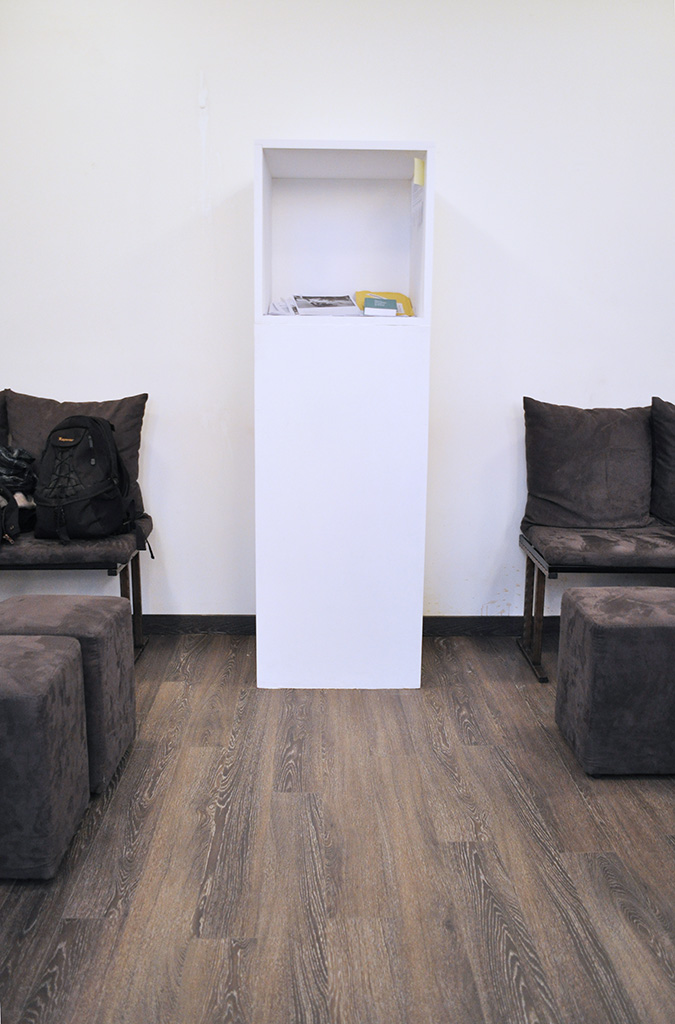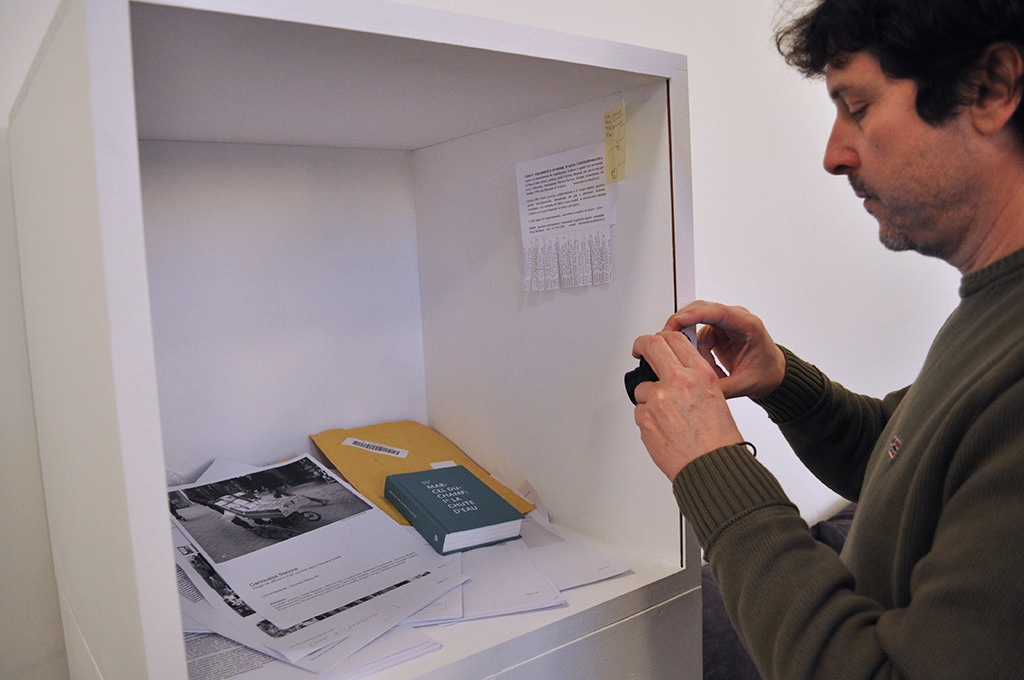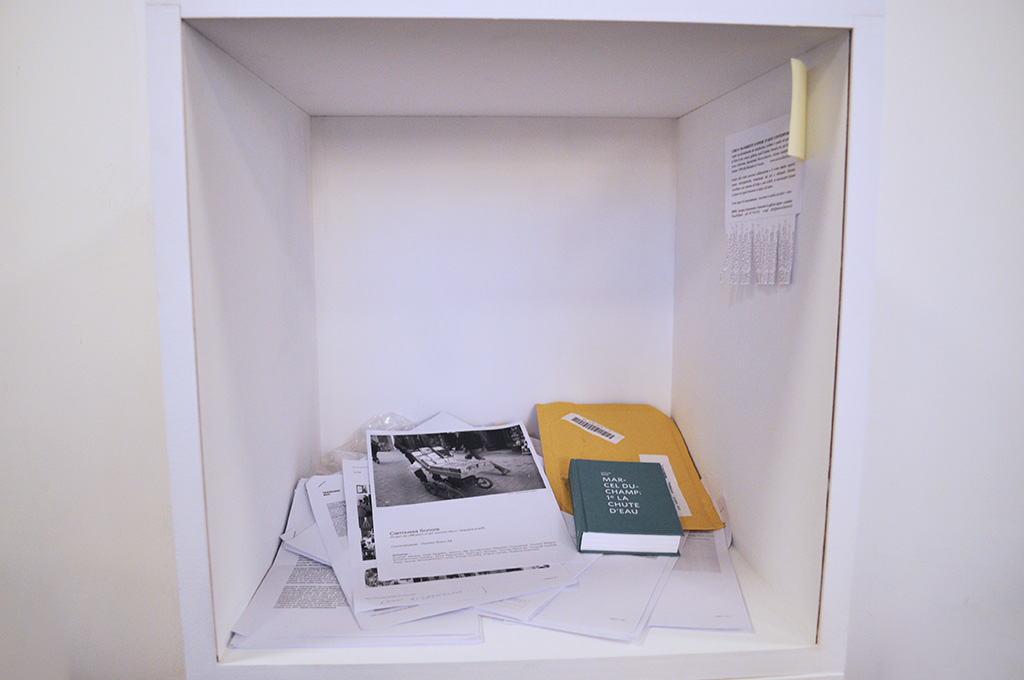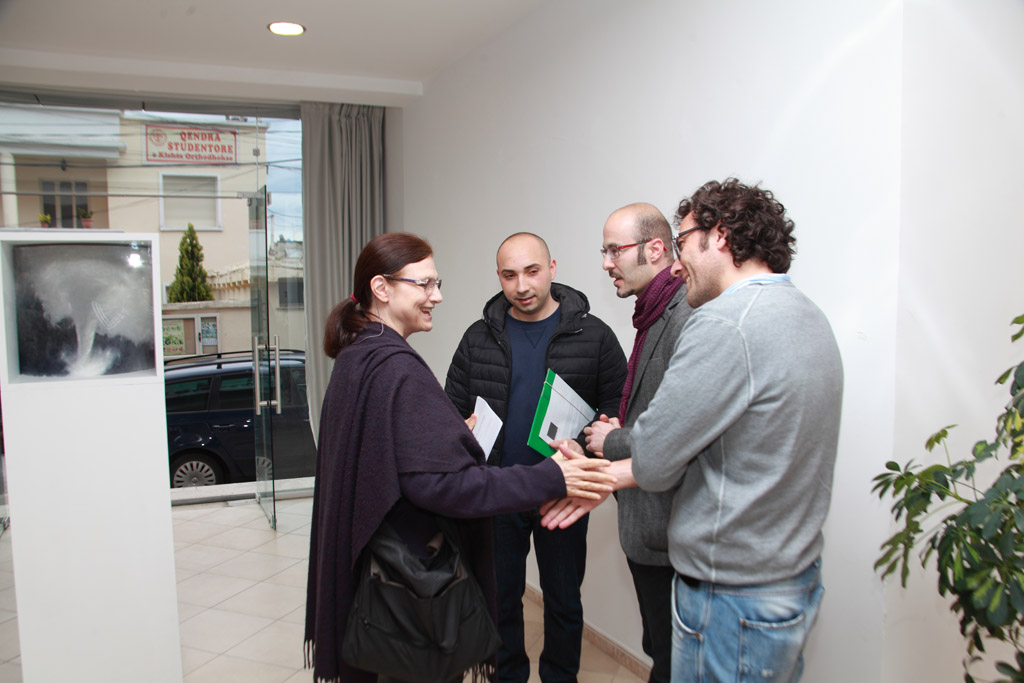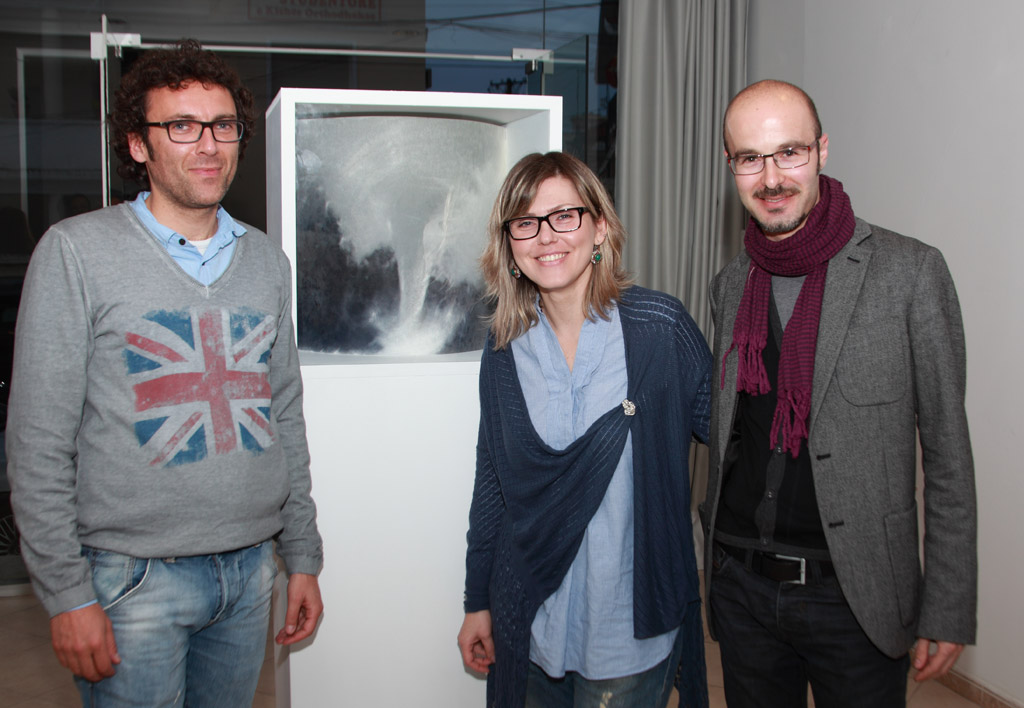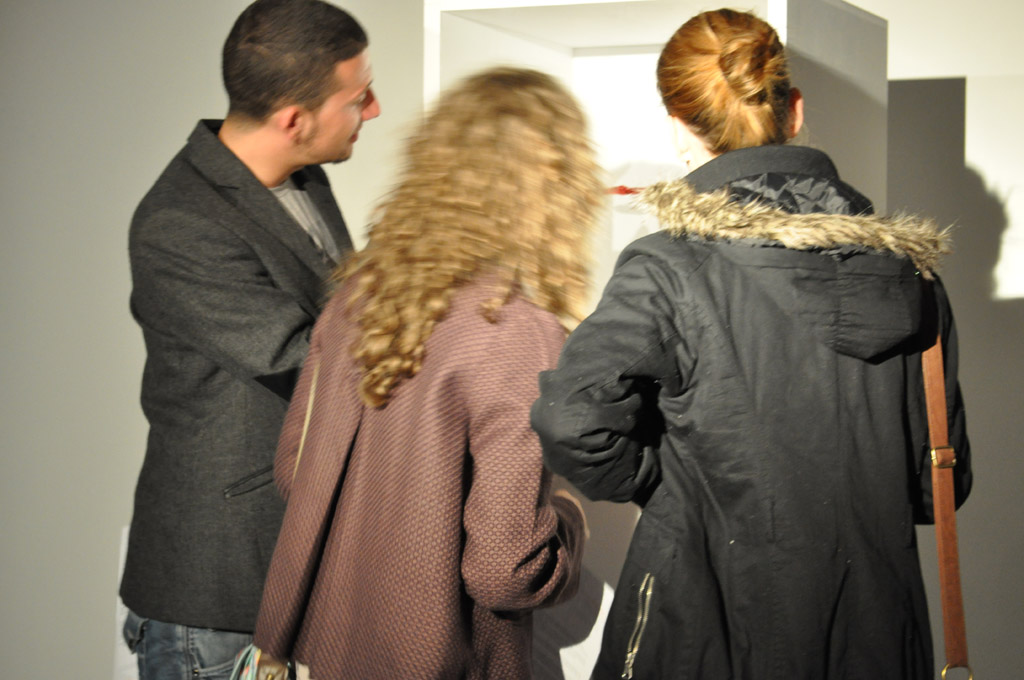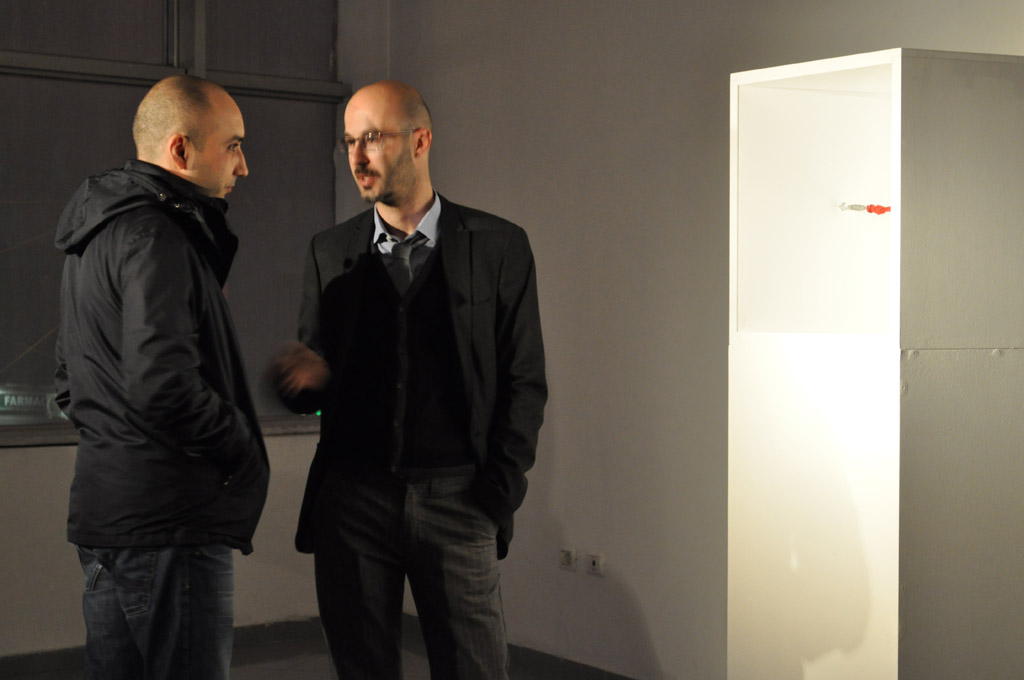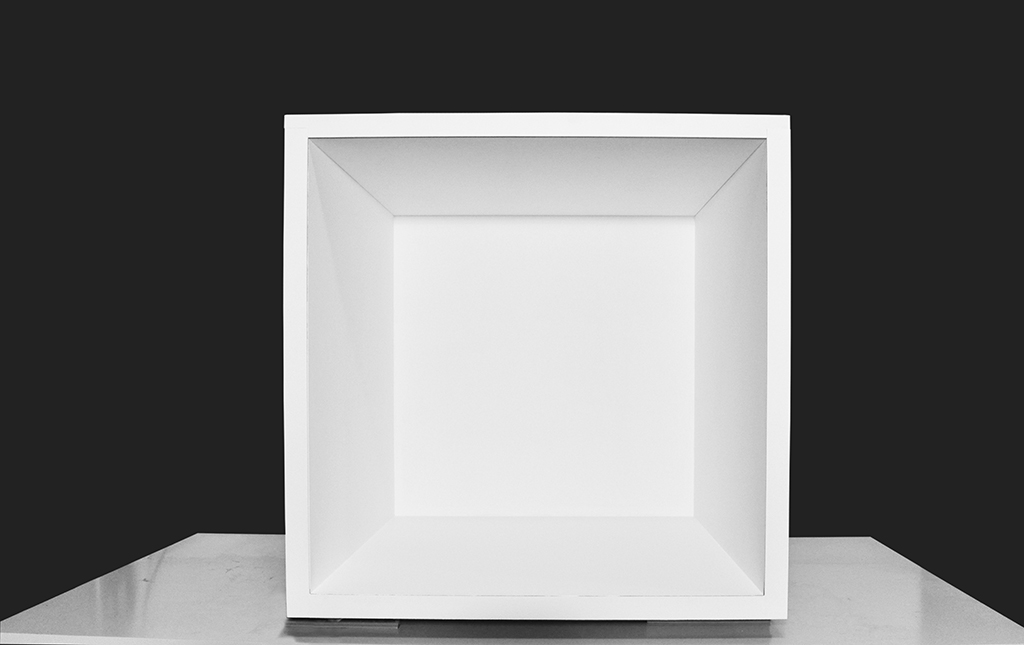
Microgallery is a portable gallery in miniature conceived in 2012.
The space is designed and built as a white cube (50x50x50cm), a space which by its own definition does not have an identity, but in this case the identity is symbolized by its size.
Microgallery is a cube, a window, a space that each time hosts a work specifically conceived for this micro space. Microgallery is in turn hosted by another space, thus becoming a space within a space.
Leone Contini | Foreign Body – Antena
Curator: Adela Demetja
15.06.2013
at Logu i Shkëndijës
Rr. Frosina Plaku, nr. 31, Tirana
The project idea flourished when the artist found an old map of Albania under the Italian occupation. The map belonged to his grandfather who was stationed in the Balkans during WWII. The map marked cities and places with lines and dots, evidencing an invasion, an attempt of control and domination. Today each dot is a void, echoing both a personal and collective amnesia: the map is a “foreign body” for both, the artist’s personal family past as well as for contemporary Italy that has removed its imperialist past from the collective awareness.
The project is realised in collaboration with Tirana Art Lab and Logu i Shkëndjës.
This project was made possibel by scholarship NCTM E L’ARTE Artists-in-residence
Giancarlo Norese | Grand Show
15.03.2013
Artist talk: 16.03.2013
at INDUSTRI bar – lounge
Rr. Nikolla Tupe, nr. 5, Tirana
Giancarlo Norese, invited to think of a project for a microgallery, began to build relationships with other spaces in the world whose dimension was ‘micro’. The artist therefore identified a feature, that of minimal space, and elevated it to the role of protagonist of his ‘Grand Show’. The show is in fact big because it considers the minimal space of the gallery as a starting point that links other minimal spaces, other needs to talk about the micro not as something detached from the macro but on the contrary as its starting point, in an inseparable relationship with each other.
This exhibition was realised thanks to the contribution of the Italian Cultural Institute of Tirana
Francesco Pedrini | Vento (Forza 12 Tornado)
20.04.2012
at the Italian Cultural Institute
Rr. Pjeter Budi, nr. 58/3, Tirana
The ‘Wind’ project consists of a series of drawings with air as the subject in its 12-force scale. From force 12 (tornado) to force 0 (flat calm). Drawings made with a micro-sandblaster from negative images of photographs taken by researchers in the field of meteorology.
Pedrini starts from the positive, turning it over in his drawings, in its negative, the starting moment of the creation of an image, a mechanical process that digital photography has in some ways eliminated, but which contains in itself an almost magical moment, that of the overturning of the image in its final appearance.
The negative is perhaps in this sense, the content of the positive, it gives us the possibility of seeing what we could not distinguish from the outside, the image ‘in power’. A container of emotions, ideas, visions, just as the tornado, the subject of this drawing, is the container of everything it has encountered along its path, a sort of centrifuge in which the idea of perspective, time, hierarchy, nature, human beings are dissolved in the movement of the wind.
This exhibition was realised thanks to the contribution of the Italian Cultural Institute of Tirana
Stefano Romano | memoria collettiva
23.03.2012
at The Office
Crossroad between Rr. Elbasan and Rr. Pjeter Budi
Ars Nova building, 2nd. Floor
For this project, the artist asks a series of people connected to him in different ways, from close family to acquaintances, to ‘remember for him’ an episode from his life. Each of them will then recall an episode that is perhaps insignificant but which, in the sum of all the memories, will construct a shared memory of the artist.
After this phase of collecting other people’s memories, the artist will write down those memories by hand, on pieces of red cloth, thus performing, through writing, a work of re-appropriation of those memories.
After transcribing all the memories, all the pieces of fabric will be sewn together, the fabric is red because red is a colour that is very present in the artist’s production whenever he has needed to affirm a presence.
The final piece of fabric is installed with hooks (of the kind used in factories) on the interior walls of the microgallery, pulling and rolling it up on itself to the point of maximum tension, so that the viewer will find it impossible to read these memories (they will only see random phrases).
This exhibition in collaboration with The Office
















